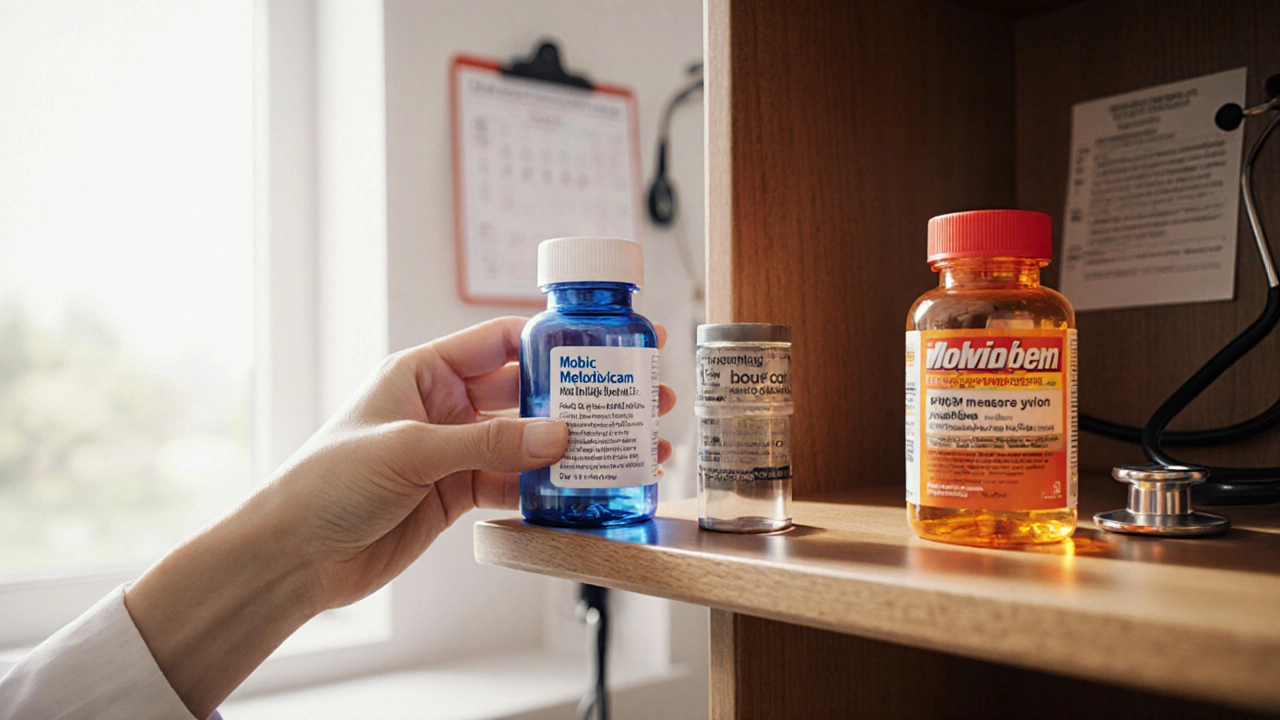Mobic Side Effects – Essential Information
When dealing with Mobic side effects, the adverse reactions linked to the NSAID mobic (meloxicam). Also known as meloxicam adverse effects, it often appears in treatments for arthritis and joint pain.
Understanding NSAIDs, a class of non‑steroidal anti‑inflammatory drugs is key because Mobic belongs to this group. NSAIDs work by blocking COX enzymes, which reduces inflammation but also lowers protective prostaglandins in the stomach. This trade‑off creates a direct link: Mobic side effects often include gastrointestinal problems and heart‑related issues.
Key Areas to Watch
One of the most common complications is Gastrointestinal ulcers, painful sores in the stomach lining caused by reduced prostaglandins. These ulcers can lead to bleeding, anemia, or even perforation if left untreated. The relationship is clear: Mobic side effects encompass gastrointestinal ulcers, making regular monitoring of stomach health essential for anyone on meloxicam.
Another serious concern is Cardiovascular events, heart attacks, strokes, and elevated blood pressure linked to NSAID use. Research shows that long‑term NSAID therapy raises the risk of clot formation. Thus, Mobic side effects also include cardiovascular risk, especially for patients with existing heart disease or hypertension.
Drug interactions form the third pillar of risk. Meloxicam can amplify the effects of blood thinners, certain antihypertensives, and other NSAIDs. When two drugs compete for the same metabolic pathways, the chance of side effects spikes. Knowing which medicines interact with Mobic helps you avoid unexpected complications.
Age and kidney function further influence the safety profile. Older adults often have reduced renal clearance, so the same dose can produce higher blood levels and more pronounced side effects. Adjusting the dose based on kidney health is a practical step to keep mobic’s benefits while limiting harm.
To manage these risks, doctors typically recommend taking mobic with food, using the lowest effective dose, and scheduling periodic lab tests. Over‑the‑counter antacids or prescription proton‑pump inhibitors can protect the stomach lining, while regular cardiovascular monitoring catches early signs of heart strain.
If you experience any of the following, consider contacting your healthcare provider: persistent stomach pain, black or tarry stools, sudden shortness of breath, chest pain, or unexplained swelling in the legs. These symptoms often signal that Mobic side effects have escalated beyond mild discomfort.
Alternative pain relievers may be a better fit for some patients. Options like acetaminophen, selective COX‑2 inhibitors, or topical NSAIDs provide relief with a different side‑effect profile. We’ll explore these alternatives in the articles below.
Besides medical strategies, lifestyle tweaks can lessen side‑effect severity. Maintaining a balanced diet rich in fiber, staying hydrated, and avoiding alcohol reduces GI irritation. Regular light exercise supports cardiovascular health, counteracting some NSAID‑related risks.
In summary, Mobic side effects are a multifaceted issue involving gastrointestinal health, heart safety, drug interactions, and individual patient factors. By recognizing each component—NSAIDs, GI ulcers, cardiovascular events, and drug interactions—you can make informed choices about pain management.
Below you’ll find a curated selection of articles that dive deeper into each of these topics, offering comparison guides, safety tips, and practical advice for buying and using medications responsibly.
Mobic (Meloxicam) vs Other NSAIDs: A Detailed Comparison
A clear, side‑by‑side look at Mobic (meloxicam) versus common NSAIDs, covering dosing, risks, cost and when each drug is best.

